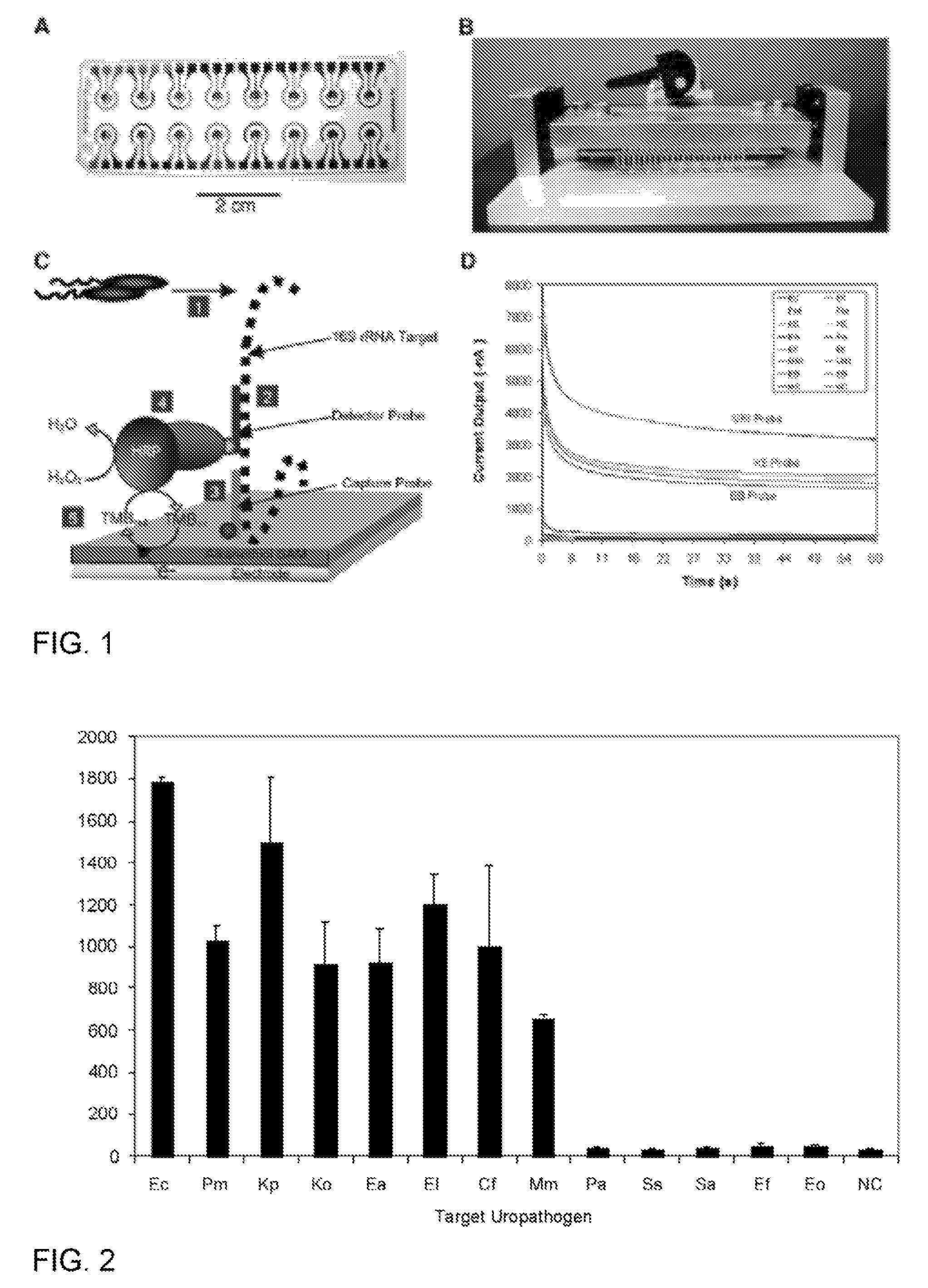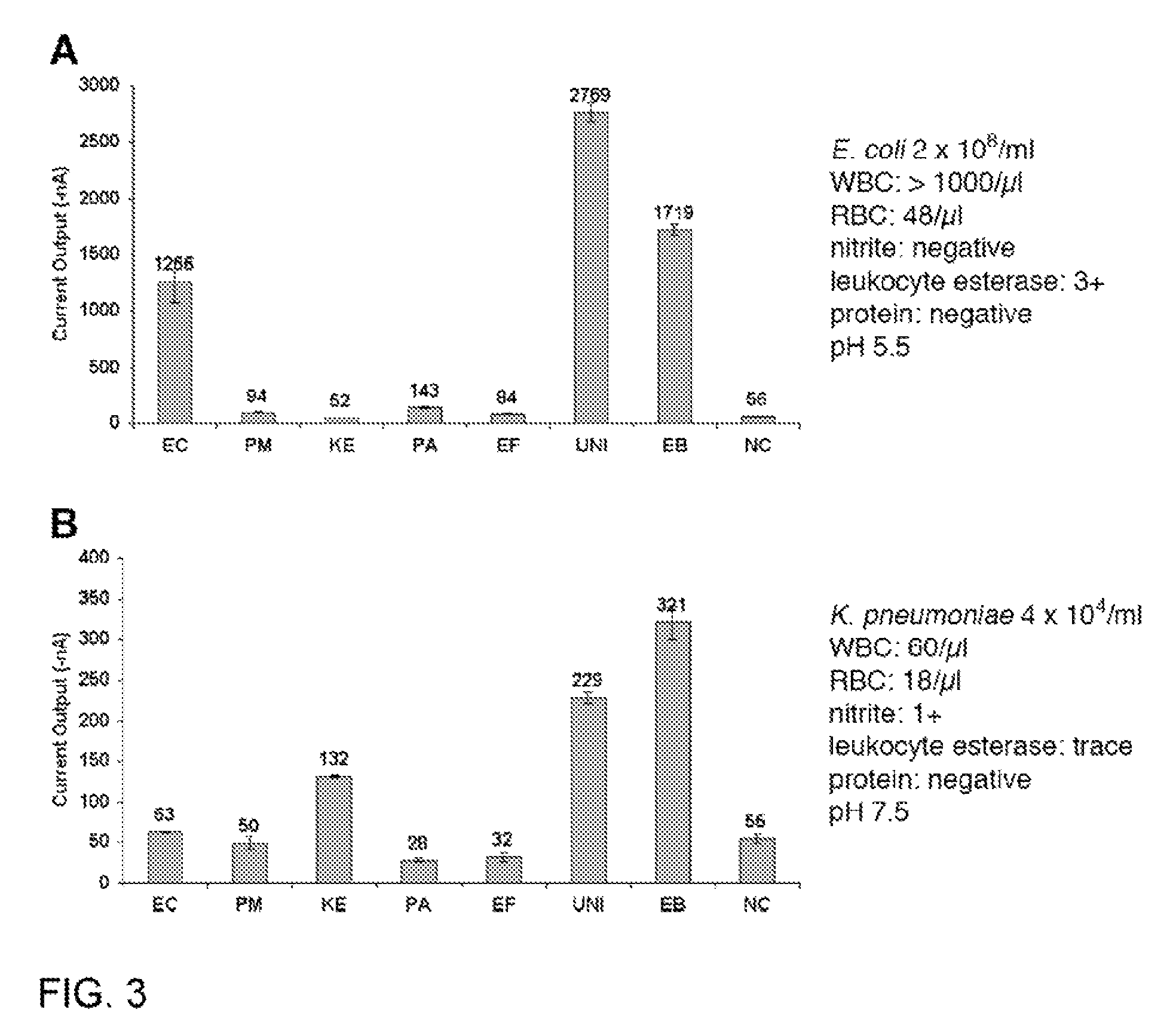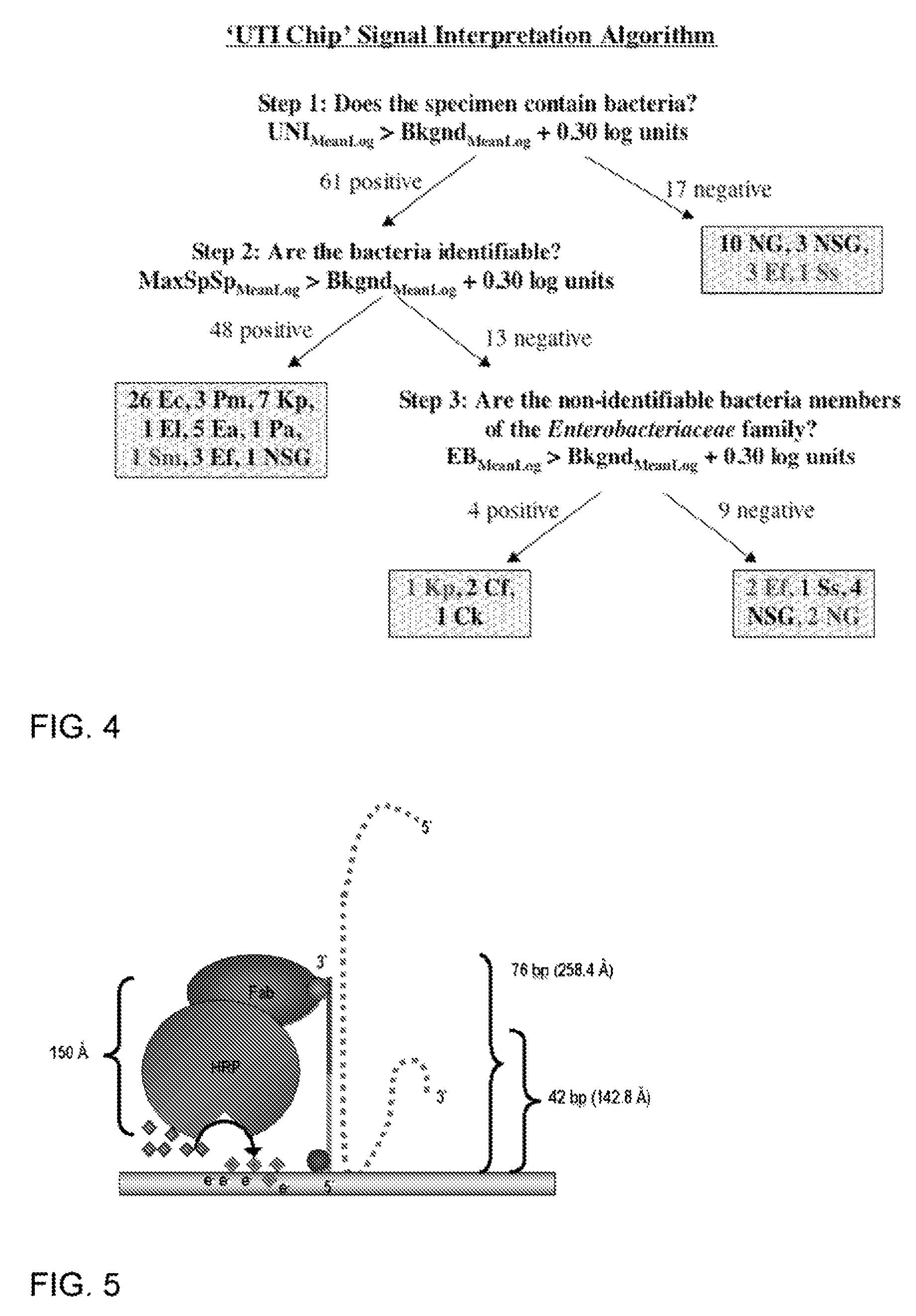Probes and methods for detection of Escherichia coli and antibiotic resistance
a technology applied in the field of probes and methods for detection of escherichia coli and antibiotic resistance, can solve the problems of life-threatening systemic infections, patient morbidity and health care expenditure, and the estimated annual cost of the united states health care system is approximately $1.6 billion, so as to accelerate the assay, detect the susceptibility to antimicrobial treatment, and rapid detection of antimicrobial susceptibility
- Summary
- Abstract
- Description
- Claims
- Application Information
AI Technical Summary
Benefits of technology
Problems solved by technology
Method used
Image
Examples
example 1
Rapid Species-Specific Detection of Uropathogens Using an Electrochemical Sensor Array
[0088]This example demonstrates species-specific detection of bacterial pathogens in clinical specimens using an electrochemical sensor. The sensor array can be an integral component of a point-of-care system for molecular detection of pathogens in body fluids.
[0089]Uropathogen isolates and clinical urine specimens. Uropathogen isolates and clinical urine specimens were obtained from the UCLA Clinical Microbiology Laboratory with approval from the UCLA Institutional Review Board and appropriate Health Insurance Portability and Accountability Act exemption. Isolates were received in vials containing Brucella broth with 15% glycerol (BBL, Maryland) and were stored at −70° C. Overnight bacteria cultures were freshly inoculated into Luria Broth (LB) grown to logarithmic phase as measured by OD600. Concentrations in the logarithmic phase specimens were determined by serial plating, typically yielding 10...
example 2
Determinants of Signal Intensity for Bacterial Pathogen Detection Using an Electrochemical DNA Biosensor Array
[0164]This example describes the determinants of electrochemical signal intensity using a sensor assay that involves hybridization of target rRNA to a fluorescein-modified detector probe and a biotin-modified capture probe anchored to streptavidin on the sensor surface. Signal is generated by an oxidation-reduction current produced by the action of horseradish peroxidase (HRP) conjugated to an anti-fluorescein monoclonal Fab bound to the detector probe. A 12-fold increase in electrochemical signal intensity for detection of Enterococcal 16S rRNA was achieved using a two-step approach involving initial treatment with Triton X-100 and lysozyme followed by alkaline lysis. This universal lysis system was shown to be effective for both Gram-positive and Gram-negative organisms. The location of fluorescein modification was found to be a determinant of signal intensity, indicating ...
example 3
Development of an Advanced Electrochemical DNA Biosensor
[0201]This example supplements Example 2 above with further data and additional probes for capture and detection.
[0202]The following flow chart shows the steps involved in the process of bacterial detection using the electrochemical sensor. Step 1: Bacterial lysis to release the 16S rRNA target. Step 2. Primary hybridization of the 16S rRNA target with the fluorescein-modified detector probe. Step 3. Secondary hybridization of the target-detector probe hybrid to the capture probe on the sensor surface. Step 4. Redox reaction generated by addition of anti-fluorescein horseradish peroxidase (αF-HRP), TMB substrate, and H2O2. The amount of time required for each step is shown. Washing occurs only before and after addition of αF-HRP. The entire assay was performed within 45 min.
[0203]
Bacterial Strains and Cultivation
[0204]The following American Type Culture Collection (ATCC) strains were obtained from the UCLA Clinical Microbiology...
PUM
| Property | Measurement | Unit |
|---|---|---|
| temperature | aaaaa | aaaaa |
| temperature | aaaaa | aaaaa |
| time | aaaaa | aaaaa |
Abstract
Description
Claims
Application Information
 Login to View More
Login to View More - R&D
- Intellectual Property
- Life Sciences
- Materials
- Tech Scout
- Unparalleled Data Quality
- Higher Quality Content
- 60% Fewer Hallucinations
Browse by: Latest US Patents, China's latest patents, Technical Efficacy Thesaurus, Application Domain, Technology Topic, Popular Technical Reports.
© 2025 PatSnap. All rights reserved.Legal|Privacy policy|Modern Slavery Act Transparency Statement|Sitemap|About US| Contact US: help@patsnap.com



